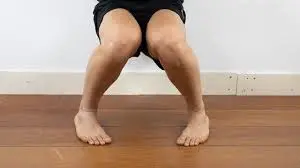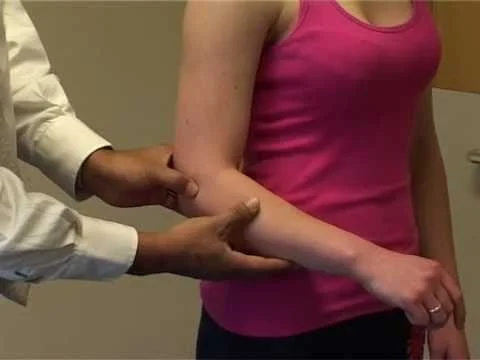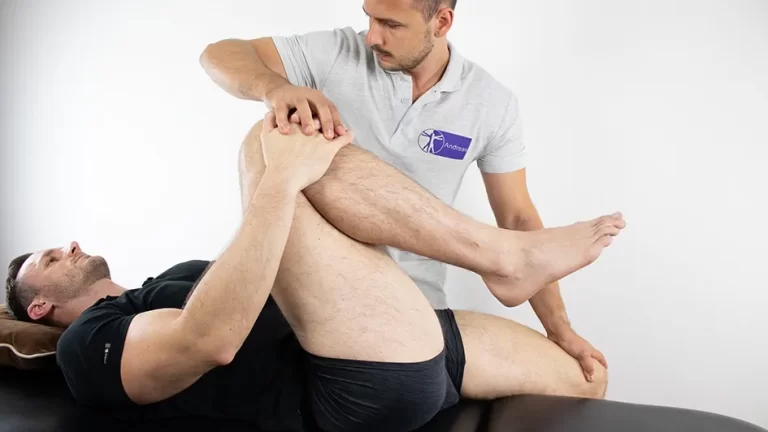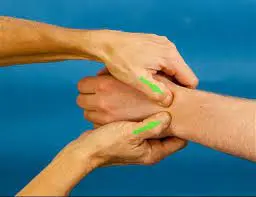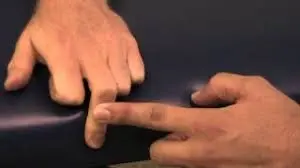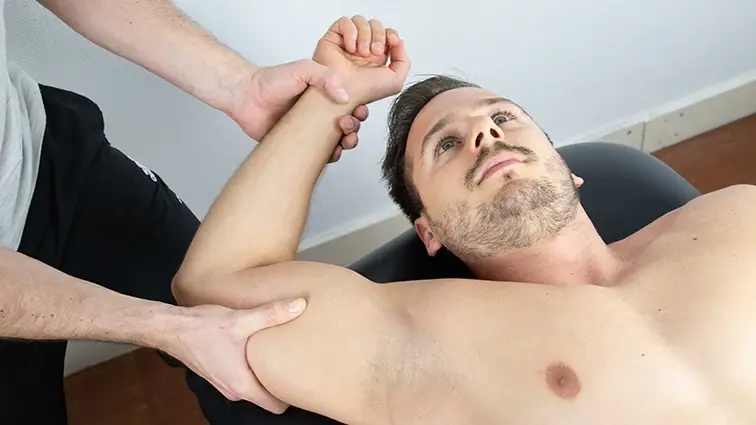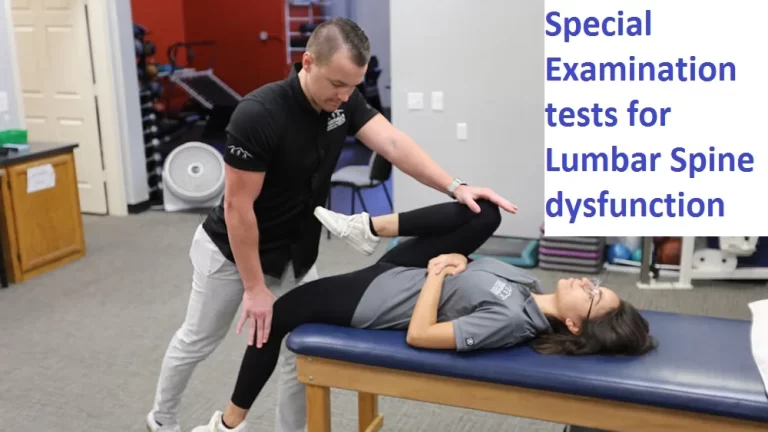Ege’s Test
Table of Contents
Definition/Description
The Ege test is also called the weight-bearing McMurray test because when patients do this test, they have to put weight on their knees. Depending on the meniscus being examined, the patient’s feet are turned outward (medial meniscus) or inward (lateral meniscus).
Clinically relevant anatomy
The genu articularis consists of several anatomical structures, including the menisci. We have two menisci, lateral and medial. They cover the articular surfaces of the tibia. The medial meniscus is greater in size and has a C shape than the lateral meniscus. It is used in conjunction with Lig. Collaterally Medially. The lateral meniscus is smaller and has an O shape than the medial meniscus. It moves more than the medial meniscus and connects to the M. popliteus.
The Ege test is one of the few symptomatic tests for a torn meniscus that a doctor can use to diagnose this type of injury. This involves placing weight on the affected knee while listening and feeling the characteristic clicking sound. Test results do not confirm a meniscal tear, but can indicate one, which can then be confirmed with imaging. This page defines the Ege test, explains what it accomplishes, and compares it to other tests.
Examination of the knee
What is the Ege test?
The Ege test was developed by Dr. Ridvan Ege in 1968. If a meniscal tear is suspected, this test can be used to determine if the tear requires surgery. In the Ege test, the patient exerts force on the knee with a squatting movement under the supervision of a healthcare professional.
The examiner listens for and feels the snap that occurs when the torn piece of cartilage is caught between the bones. It is additionally considered as a weight-bearing variant of another test, the McMurray test. Meniscal symptoms can also be detected with the McMurray test.
Purpose
The purpose of the test is to detect a meniscal tear on the medial or lateral side of the knee.
Technique
The Egen test is performed in a standing position.
Starting position
The knees are extended
The patient stands with his feet 30-40 cm apart
Depending on the meniscus being tested (medial or lateral), the patient’s legs are positioned to allow maximum external knee rotation (medial meniscus) or maximum internal knee rotation (lateral meniscus).
Test Movement
With a medial meniscus tear, the patient squats with both legs in maximal external rotation and then slowly stands up. The distance between the knees increases and each knee turns outward as the squat progresses. Squatting with maximal external rotation induces Genu varus (knees pointing outwards). The patient squats as far as possible and then returns to the starting position (knee extension).
To see a lateral meniscal tear, both lower limbs are held in maximum internal rotation of the knee while the patient squats and stands. Full Squat Internal rotation is rarely possible even with healthy knees, so the patient must stabilize at slightly less than a full squat. Unlike the medial meniscus test, the distance between the knees decreases and the knees internally rotate as the squat progresses. Squatting with maximum internal rotation induces Genu valgus (knees pointing inwards). The patient squats as far as possible and then returns to the starting position (knee extension).
Test result
The test is positive if the patient feels pain and/or clicking in that joint line. The extension squat is stopped as soon as pain and/or clicking is felt, so the full squat is not necessary for all patients. Sometimes the pain and/or clicking is felt only after the squat has reached its maximum or when the patient comes out of the squat. Both are still considered positive for this test. Pain and/or clicking is usually felt when the knee is at about a 90° angle.
Considerations
It is important that both feet remain on the ground during the test. It is important to maintain maximum rotation throughout the squat
Even healthy people cannot fully perform these movements, so first, it is important that the patient does not squat completely to avoid exacerbating the pain. Second, it is important that the patient use support if necessary (e.g. on the treatment table).
Anterior tears of the meniscus cause symptoms earlier when the knee is bent, while tears of the posterior horn of the meniscus cause symptoms when the knee is bent more deeply. The flexion-external and internal-external rotation components of the test are similar to the McMurray test. However, the most important difference is the patient’s bearing capacity. Reserve and light tension are also present in the internal and external rotation positions.
Clinical background
Two standard tests for a torn meniscus are the McMurray test and the joint tenderness test (JLT). The McMurray test occurs when the patient is lying down. The Ege test cannot be performed on every patient with a weight-bearing spondylolisthesis injury. This examination should be performed taking into account the patient’s balance and pain.
Summary
The Ege test helps diagnose a meniscus tear in the knee. This means putting weight on the knee in a squatting position under the guidance of a doctor. Pain or clicking may indicate a meniscal tear. Your doctor may use other tests to confirm the diagnosis, including an MRI.
FAQ
What is the Ege test?
The Ege test helps diagnose a meniscus tear in the knee. This means putting weight on the knee in a squatting position under the guidance of a doctor. Pain or clicking may indicate a meniscal tear. Your doctor may use other tests to confirm the diagnosis, including an MRI.
What are the sensitivity and specificity of the Ege test?
However, for medial meniscal tears, the Ege test gave better results in terms of accuracy, sensitivity, and specificity (0.71, 0.67, and 0.81, respectively). For lateral meniscal tears, the Ege test gave better results than the others: accuracy 0.84, sensitivity 0.64, and specificity 0.90. Egen’s test is more accurate than sensitive.
Reference
Eigen test. (n.d.). Physiotherapy. https://www.physio-pedia.com/Ege’s_Test
Ladva, V. (2022, January 8). Egeand#8217; trial?: a mobile physiotherapy clinic. https://mobilephysiotherapyclinic.in/eges-test/
Cluett, J. (2022, September 28). How Egeand#39; ‘s Test works to detect a torn meniscus. Very healthy. https://www.verywellhealth.com/eges-test-detecting-a-meniscus-tear-2549648
oh (2023, June 15th). Testo de Aegeo kaj#039; OrthoFixar 2023. OrthoFixar. https://orthofixar.com/special-test/eges-test/

